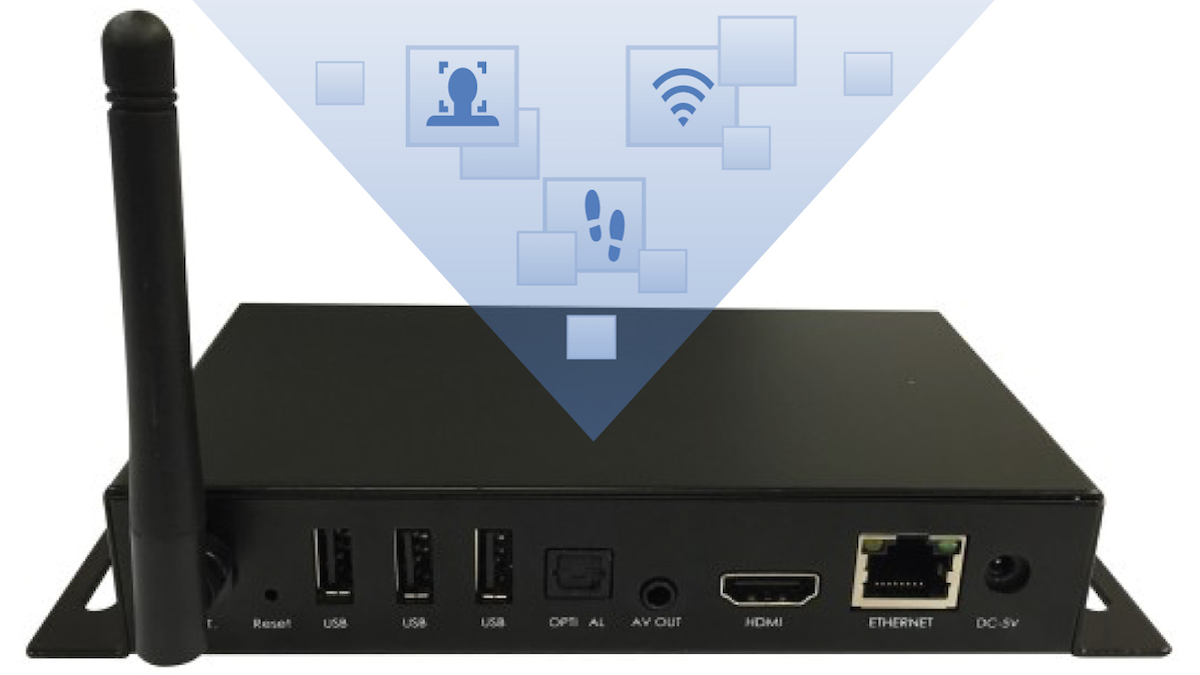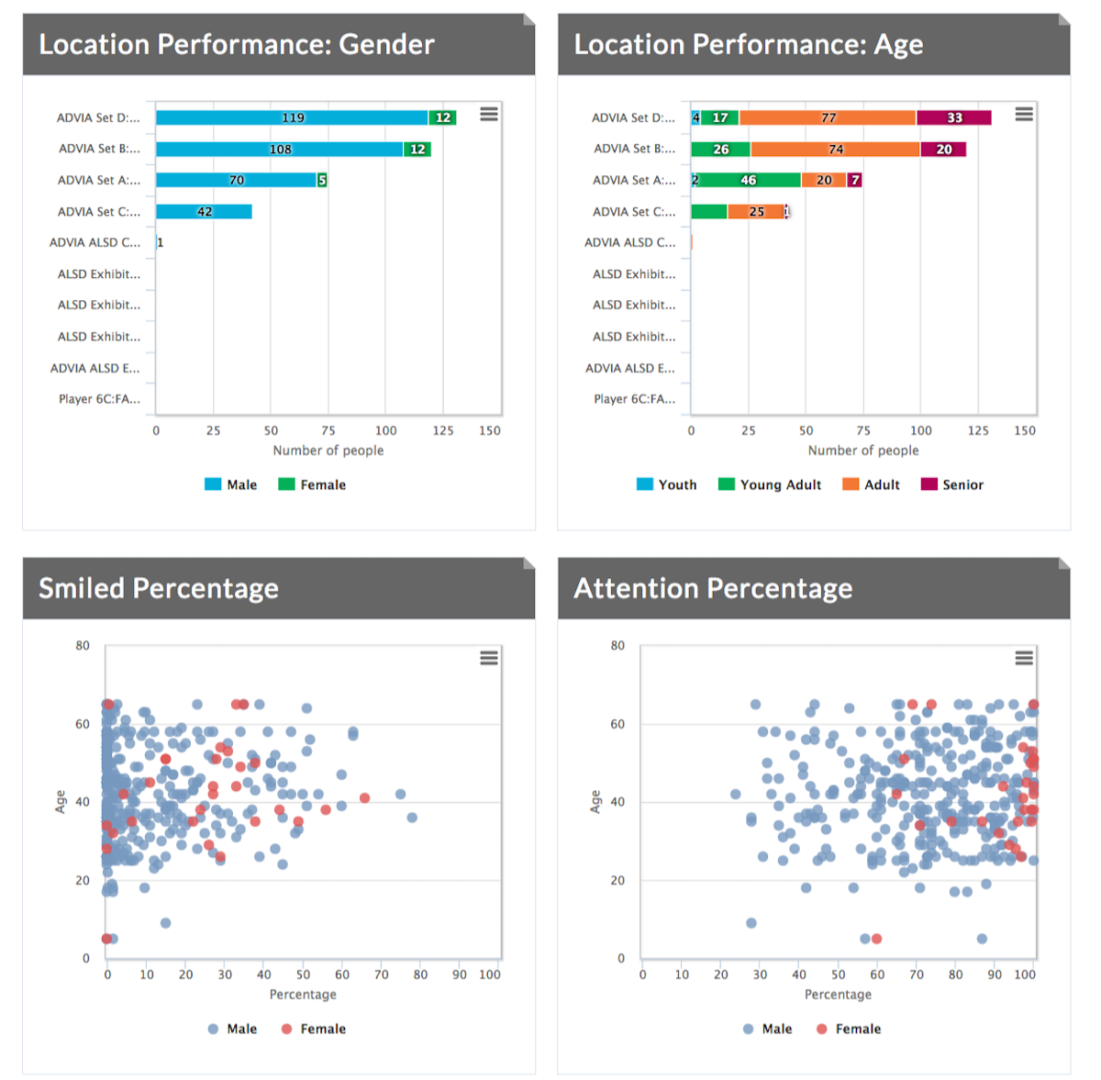Advia launches “all-in-one” marketing system for multiple sensing at physical locations
And Toronto-based Rover releases rebuilt mobile marketing platform focused on location.
Marketers interested in location-based ads and messaging have two new options — Advia Partners’s new Amp multi-sensing device and platform for physical stores, and Rover’s rebuilt mobile marketing platform for location-based targeting.
Cincinnatti-based Advia, founded in 2014, is out with its first product, an “all-in-one” product that seeks to provide a unified approach for many in-store, customer-sensing signals.
A small device, about half the size of a cigar box, can track if a smartphone entering the store is looking for WiFi or Bluetooth. (See photo at top of this page.) If so, the platform marks it anonymously with the mobile device ID. If the phone or tablet logs onto a store’s WiFi, the device picks that up, connecting that log-on profile to the mobile ID.
A camera can plug into the box, or connect wirelessly, so it can capture customers’ faces. Utilizing a licensed algorithm from a Hong Kong firm, the platform determines the visitor’s gender and approximate age.
CEO John DeCaprio told me that the Advia engagement engine can then, for instance, immediately show — on a kiosk at the counter — a marketing screen targeted at the twentysomething male standing there, whose age and gender the platform has identified.
The box can also take a signal from weight sensors (not included), which might indicate that something has been removed from a nearby shelf. And the platform can also receive input from Bluetooth beacons, or from participating apps — on the phones of opted-in visitors — that have detected a pre-determined audio signal.
While Advia does not track geofencing incursions or GPS, DeCaprio said it can infer GPS triangulation if the store has three Advia boxes. It can also integrate outside data sources, such as customer relationship management, point-of-sale, or RFIDs.
All of these triggers can result in, say, content being displayed on a digital sign or kiosk in the store, programmable lights turning on or moving, or even a smell like freshly baked cinnamon rolls wafting from a scent generator (not included). Here’s a screen from the dashboard:
Advia joins a variety of marketing platforms that employ sensing in physical locations, ranging from multi-sensor platform Taggalo to RetailNext’s WiFi tracking and video analytics to HP Enterprises’ Aruba beacon management platform.
DeCaprio told me that his platform’s differentiator is that it pulls the sensing feeds together from many in-store sources, and immediately directs content via its real-time rules engine.
The Advia system starts at $100/month for the platform and one sensing device, with multiples of that for each additional sensing device.
It has been piloted with the Professional Golfers Association (PGA), and is currently being employed by a local billboard company to detect license plates of passing cars and — anonymously — reporting back on the audience reach and impression frequency. DeCaprio said that a U.S. rollout will take place over the next six month.
And Toronto-based Rover has released what it describes as “a complete rebuild” of its location-focused mobile marketing platform, including API integration with major beacon manufacturers. It can pick up data from beacons (either iBeacon or Eddystone) or from geofences, to assist targeting for push notifications to locked screens or for in-app messages.
CEO and co-founder John Coombs told me that the updated platform can now generate multi-screen in-app landing destinations. This means a user can click on a push notification, go to the participating app, and see an extended series of marketing messages instead of a single screen one. These new kinds of “Experiences” (see image below) help to distinguish it from competitors like Kahuna, he said.
Contributing authors are invited to create content for MarTech and are chosen for their expertise and contribution to the search community. Our contributors work under the oversight of the editorial staff and contributions are checked for quality and relevance to our readers. MarTech is owned by Semrush. Contributor was not asked to make any direct or indirect mentions of Semrush. The opinions they express are their own.
Related stories


